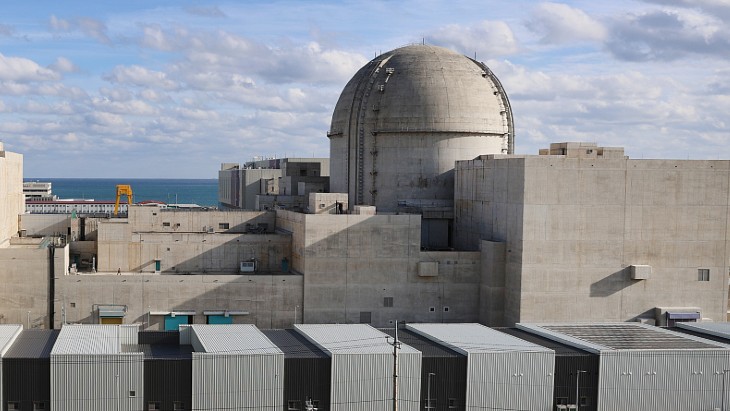The Intergovernmental Panel on Climate Change's (IPCC's) Summary for Policy Makers, published on 17 November, notes nuclear power as a currently available commercial climate change mitigation technology, and advanced nuclear power as an option before 2030. Overall, the IPCC reports greater confidence in evidence for the effects of global warming that have already happened and predictions of future climate change.
The Summary for Policy Makers (SPM) is a 23 page distillation of the IPCC's Synthesis Report, which itself is a compliation of the thousands of pages written in the reports of three working groups, whose detailed reports were published earlier this year. More than 800 contributing authors and more than 450 lead authors were involved in the writing of the Fourth Assessment Report (AR4), with a two stage review stage that involved more than 2500 climate change experts.
The SPM reports that warming of the climate system is unequivocal, as is now evident from observations of increases in global average temperatures, widespread melting of snow and ice and rising sea levels.
Global greenhouse gas emissions from human sources have increased 70% since 1970, with over a quarter of all greenhouse gas emissions coming from energy supply.
For future changes in temperature and sea level rise the IPCC reports different predictions for different increases in atmospheric carbon dioxide (CO2) concentrations. Best estimates of temperature increases range from 2.0 to 6.1 degrees C, with sea levels rising by between 0.4 to 3.7 m, not including any rise due to melting ice.
| Final CO2 atmospheric concentration (ppm) | Period of peak CO2 emissions | Change in CO2 emissions by 2050 (%) | Global average temperature increase ( degrees C ) | Global average sea level rise due to thermal expansion (m) |
| 350 - 400 | 2000 - 2015 |
-85 to -50 | 2.0 - 2.4 | 0.4 - 1.4 |
| 400 - 440 | 2000 - 2020 | -60 to -30 | -60 to -30 | 0.5 - 1.7 |
| 440 - 485 | 2010 - 2030 | -30 to +5 | 2.8 - 3.2 | 0.6 - 1.9 |
| 485 - 570 | 2020 - 2060 | +10 to +60 | 3.2 - 4.0 | 0.6 - 2.4 |
| 570 - 660 | 2050 - 2080 |
+25 to +85 | 4.0 - 4.9 | 0.8 - 2.9 |
| 660 - 790 | 2060 - 2090 | +90 to +140 | 4.9 - 6.1 | 1.0 - 3.7 |
A wide range of migitation options available to reduce greenhouse gas emissions were listed from sectors including energy supply, transport, buildings, industry, agriculture, forestry and w astes. In the energy sector nuclear power was listed as a commercially available option, alongside improved supply and distribution efficiency; fuel switching from coal to gas; renewable heat and power (hydropower, solar, wind, geothermal and bioenergy); combined heat and power and early applications of carbon dioxide capture and storage (CCS).
By 2030 the IPCC expect CCS for gas, biomass and coal-fired electricity generating facilities; advanced nuclear power; advanced renewable energy, including tidal and wave energy, concentrating solar, and solar photovoltaics to be commercially available.
Policies and measures shown to be environmentally effective include reduction of fossil fuels subsidies and carbon taxes, although resistance by "vested interests" may make such measures difficult to implement, said the IPCC.
Further information
Intergovernmental Panel on Climate Change
WNA: Policy Responses to Global Warming information paper
WNN: IPCC sees role for nuclear energy
WNN: IPCC reports more climate change certainty
WNN: IPCC publishes report on impacts of climate change




_72306.jpg)


_49562.jpg)





